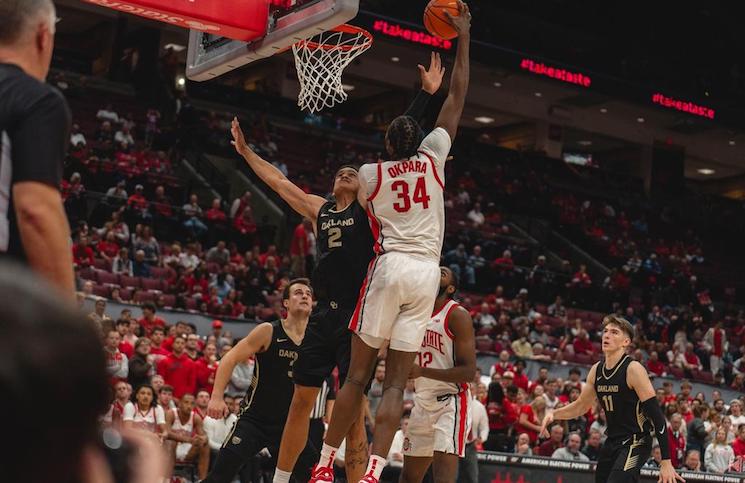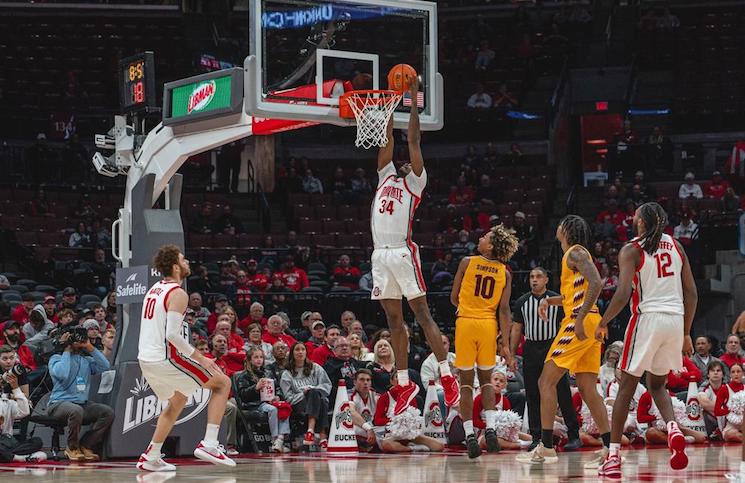
It’s not often sports and the stock market get mixed together. But that’s just what football statistician and analyst Phil Steele has done with college football.
Steele is famously known for his love of numbers and how he uses them to evaluate college football teams. One of his more unique qualifiers is his “Stock Market Indicator” that attempts to gauge a team’s trajectory for the upcoming season. And for the most part, it’s worked fairly well over the last few years.
According to Steele, his SMI is a formula that takes a team’s win totals from three and two years ago, averages them out, and subtracts the previous year’s win total to figure out if the team overachieved or underachieved the previous season and if the team is due for a letdown or a bounce back season in the current year.
Sound convoluted? That can happen with stock market analogies. Let Steele explain it using the 2012 Ohio State Buckeyes as an example.
“In 2012, Ohio St. had a Stock Market Indicator (SMI) of +5.5, which would be a Bull Market,” writes Steele. “The +5.5 was calculated by taking their average win total from 2009-2010, which was 11.5 (11-2 in ’09, 12-1 in ’10) and then subtracting their wins from ‘11 (just 6) which produced the +5.5.
“The +5.5 means that after two great seasons in ’09-‘10, the Buckeyes clearly underperformed in ‘11 and were poised for a big bounce back the next year (Bull Market). My Stock Market Indicator proved to be spot on as the Buckeyes were the Most Improved Team in the country going 12-0 in ’12.”
So by taking Steele’s calculations, the Vols’ win totals from 2014 (7) and 2015 (9) equal 16 wins. That averages out to 8 wins those two seasons. Subtract the Vols’ 9 wins in 2016, and you get a -1 SMI. And that’s just what Steele gives the Vols in his 2017 SMI chart.
Steele has the nine lowest scores as his actual “bear market” teams, but the Vols are in still in a slight bear market according to his definitions. And according to Steele’s historical data, teams with a -1 to -1.5 SMI had the same or weaker record than the previous season 63.6 percent of the time.
So what do all these numbers mean? It means that, according to Steele’s data, the Vols are more likely to have a similar or worse record than their 9-4 mark in 2016 than they are to have a better record.
The rest of the SEC doesn’t fare much better than Tennessee, however. Only Ole Miss (+4.5), Missouri (+4), Mississippi State (+3.5), Georgia (+2), LSU (+.5), and Arkansas (+.5) are on the positive side of Steele’s stock market analysis, and LSU and Arkansas only barely so. Texas A&M comes in at a neutral 0 while Auburn (-.5), Florida (-.5), South Carolina (-1), Alabama (-1). Kentucky (-2), and Vanderbilt (-2.5) all join the Vols in the negative.
Steele’s SMI has been fairly accurate over the last few seasons. But the Vols’ position on his chart is far from definite. A little more than a third of the teams in the range the Vols are in ended up with better records that season. The odds may not necessarily be in Tennessee’s favor, but they’re far from overwhelming.





One Response
First time on this site. As Tennessee fan from Middle TN living in Southern California, always looking for fresh articles and insight. Thanks for your hard work.
Mike